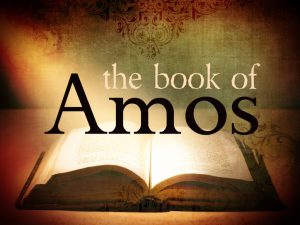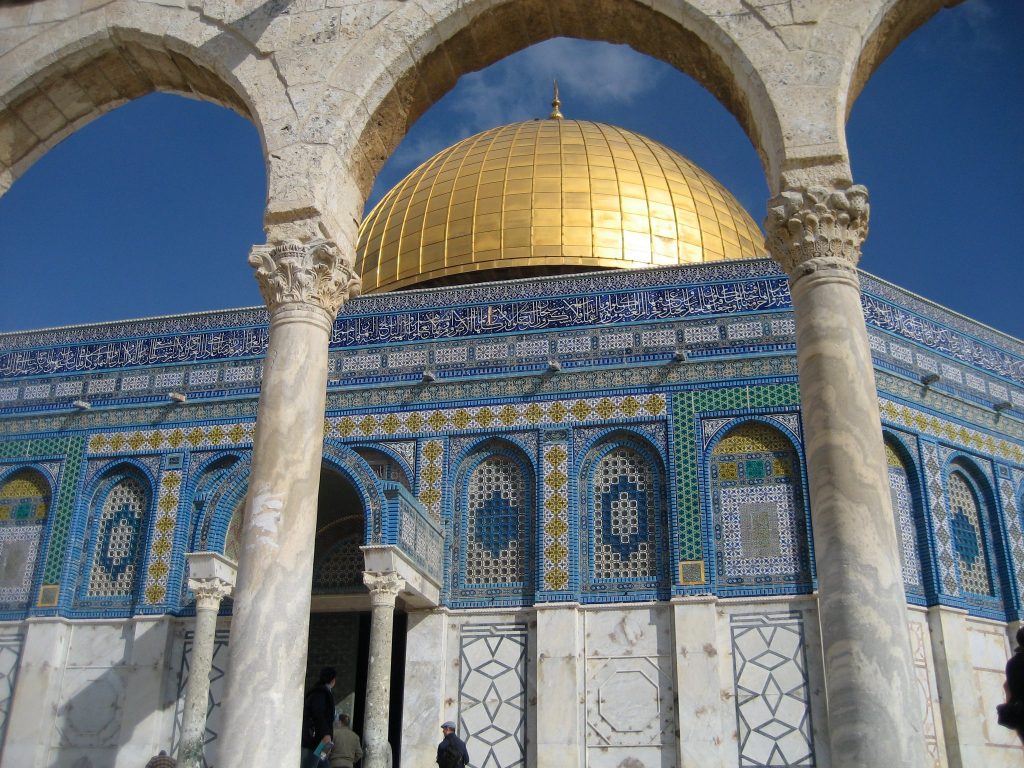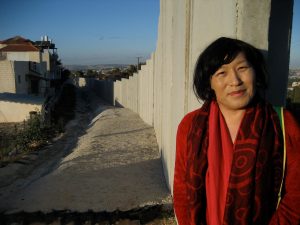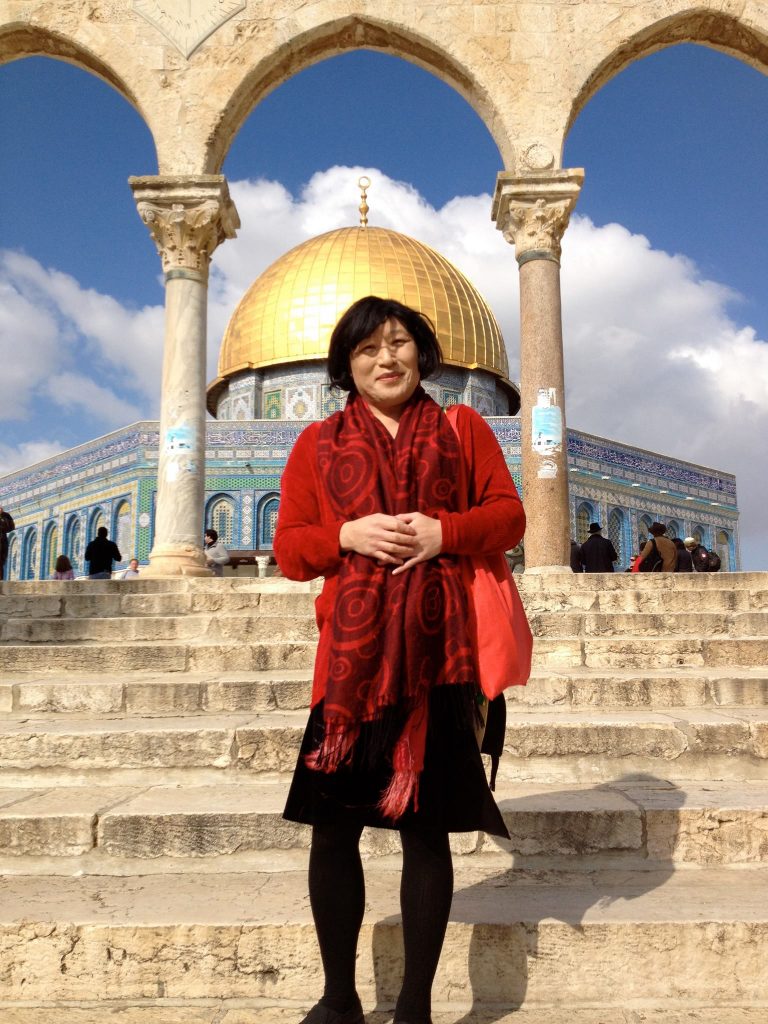
Queering the Book of Amos
By Pauline Park
Amos is one of the more obscure books of the Bible: Amos does not tell the story of the creation of the universe like Genesis nor offer the exquisite poetry of the Psalms; and yet, there is much in Amos to ponder, especially for members of the lesbian, gay, bisexual, transgender and queer (LGBTQ) community.
I was raised in a Christian fundamentalist household and grew up hearing countless Bible passages read in church, including those in Leviticus and Deuteronomy so often cited by fundamentalists to condemn homosexuality and transgender and it is worth noting that the Book of Amos cites the story of Sodom and Gomorrah that is a central feature of homophobic interpretations of Leviticus.
There are hundreds of translations of the Bible but I will quote passages from the King James Version (KJV) — considered by some to be one of the most inaccurate English translations but the one I grew up with and certainly a masterpiece of English literature; ironically, the KJV was despised by the Puritans who fled James I’s England yet has become the most popular among Christian fundamentalists — the Puritans’ spiritual successors — including members of the Lutheran Church-Missouri Synod in which I was raised.
Amos introduces himself thusly:
“The words of Amos, who was among the herdmen of Tekoa, which he saw concerning Israel in the days of Uzziah king of Judah, and in the days of Jeroboam the son of Joash king of Israel, two years before the earthquake” (Amos 1:1).
Amos is one of the shorter books of the Bible and its nine chapters are full of the prophet’s remonstrances against the ancient Israelites for betraying the trust of the God who in Hebrew is known as ‘Yahweh’ — the classic ‘sky god’ whom one imagines as an old white man with a long white beard sitting on a throne in mid-air.
“But I will send a fire upon Judah, and it shall devour the palaces of Jerusalem,” this Yahweh declares (Amos 2:4): the Book of Amos reads like a laundry list of Israelite transgressions followed by divine admonitions, threats and punishments; but how many of them have to do with homosexuality and/or transgender…?
Amos writes,
“I have overthrown some of you, as God overthrew Sodom and Gomorrah, and ye were as a firebrand plucked out of the burning: yet have ye not returned unto me, saith the Lord” (Amos 4:11).
The story of Sodom and Gomorrah detailed in Leviticus is incessantly invoked by homophobic Christian fundamentalists as an absolute proscription against homosexuality — which some extend to transgender; but is it…?
No book of the Bible mentions homosexuality per se, much less transgender: clearly, neither term would have been used when the books of the Old and New Testaments were written since ‘homosexuality’ as a term was invented by European sexologists in the late nineteenth century and ‘transgender’ did not come into popular parlance until the late twentieth; to that extent, the Bible cannot be said to condemn either homosexuality or transgender — or bisexuality — per se, even if the term ‘sodomite’ would come into common parlance in Europe centuries after the compilation of the Old Testament. Some have suggested a distinction between ‘sodomite’ as the inserting partner in a male homosexual encounter and a ‘catamite’ as the receptive, but that distinction also most likely would not have been used by the ancient Israelites at the time of the writing of the books of the Old Testament.

There are feminist and progressive theologians and Biblical commentators who have interpreted the story of Sodom and Gomorrah as a story about the compelling responsibility to offer hospitality to strangers and the destruction of those two cities as punishment for their flagrant denial to accept that responsibility; regardless, the fundamentalist citation of Sodom and Gomorrah cannot possibly be used as a condemnation of contemporary LGBT identity formations and same-sex relations between equals because such relations were never mentioned in any book of the Bible and were foreign to the ancient Israelites.
However, there is one respect in which homosexuality and possibly even transgender is relevant to a discussion of the Old Testament: what is the clear consensus of most contemporary Biblical scholars is that a key narrative throughout the Old Testament is the struggle of the ‘Chosen People’ to distinguish themselves from the indigenous Canaanites who were ‘ethnically cleansed’ by the ancient Israelites — much as Palestinians are now being subjected to ethnic cleansing by Apartheid Israel. The crucial distinction is that the indigenous Canaanites were polytheistic pagans while the Israelites were adherents of a monotheistic religion. And there is considerable consensus among experts that ancient polytheistic societies were generally more ‘queer friendly’ (to use a contemporary term) than monotheistic ones: many such societies in the Near East and beyond not only seemed to accept same-sex relations but included shamanic figures who we might term ‘transgendered’ (what Gilbert Herdt calls the ‘third sex/third gender subject position’). So to the extent that the Book of Amos and other books of the Old Testament depict Yahweh and his prophets as threatening ‘fire and brimstone,’ it could well be because of perceived backsliding on the part of ancient Israelites and intermingling (possibly even intermarrying) with the polytheistic pagan Canaanites.
And that brings me to another important part of the puzzle: Amos declares,
“Also I brought you up from the land of Egypt, and led you forty years through the wilderness, to possess the land of the Amorite” (Amos 2:10).
It is a significant fact that messianic Zionists in contemporary Israel and the illegally occupied West Bank and East Jerusalem sometimes refer to Palestinians as ‘Amorites’ and it is perhaps an unwitting acknowledgement of the fact that many (perhaps even most) contemporary Palestinians are descendants of the ancient Canaanites. In fact, the very name of Jerusalem — universally recognized as holy to Muslims and Christians as well as Jews — is not a Hebrew name but rather a Jebusite one — hardly surprising, since the Jebusites lived in the city before it was taken by force by the ancient Israelites.
And that leads to an important point about what is commonly called ‘the Holy Land’: the state of Israel was founded by European Zionists as part of a white settler colonialism based on the ethnic cleansing of Palestine’s indigenous inhabitants in what they call the ‘Nakba’ of 1948; since 1967, the West Bank, East Jerusalem and the Gaza Strip have been illegally occupied by the state of Israel and at least tens of thousands of those indigenous Palestinians living under illegal occupation are LGBT (whether they openly identify as such or not).
I have been involved in Palestine solidarity work since 2011 and I participated in the first US LGBTQ delegation tour of Palestine in 2012, meeting with LGBT/queer and non-LGBT Palestinians and Israelis on both sides of the ‘Green Line’ (Israel on one side, the West Bank on the other). Over the course of the week, we met with members of Aswat — an organization for lesbian and bisexual women and transmasculine female-bodied Palestinians (most of them Palestinian citizens of Israel), some of whom identify as transmen; in Ramallah and Nablus, we met with members of al-Qaws and Palestinian Queers for Boycott, Divestment & Sanctions (PQBDS) — organizations advocating on behalf of LGBT/queer Palestinians living under an interminable and increasingly brutal illegal occupation. We met with a Palestinian farmer in Mas-ha whose little house was separated from his acre of farmland by the apartheid wall as part of an attempt by the Israeli occupation authorities to seize his land by making it impossible to cultivate it (under Israeli law — illegally applied in the illegally occupied territories — the Israeli authorities can seize land if a farmer fails to till the soil for three years or more). In Nabi Saleh, we met the Tamimi family — which has had several members killed by the Israeli military while peacefully marching down the tiny Palestinian village’s main street every Friday in an unarmed protest against the illegal and increasingly genocidal occupation.
Most shockingly, in Hebron, we saw Shuhada street — called ‘Segregation Street’ by local indigenous Palestinians because they’re confined to walking a strip that is only one-third the width of the street while Israeli settlers from illegal Israeli settlements enjoy two-thirds of the street. And in Tel Aviv, we met with members of Zochrot — an Israeli organization attempting to educate Israeli Jews on the Nakba — the ethnic cleansing of British Mandate Palestine by Zionist militias that was the basis for the founding of the state of Israel: between 750,000 and one million Palestinians were driven out of historic Palestine and more than 500 Palestinian villages were destroyed, but it is illegal in Israel today for any schoolteacher to mention the Nakba in Israeli schools; most importantly, that process of ethnic cleansing continues to this very day, subsidized by the United States with $3.8 billion a year in US taxes.
It is both with regard to the movement to liberate Palestine from Apartheid Israel’s illegal and genocidal occupation and the movement to liberate LGBTQ people from oppression everywhere that I cite the most famous line in the Book of Amos:
“But let judgment run down as waters, and righteousness as a mighty stream” (Amos 5:24).
And I reinterpret this oft-cited passage as an injunction to pursue social justice for all, including LGBTQ people. In that light, this passage from Amos also requires interpretation and clarification:
“Seek him that maketh the seven stars and Orion, and turneth the shadow of death into the morning, and maketh the day dark with night: that calleth for the waters of the sea, and poureth them out upon the face of the earth: the Lord is his name” (Amos 5:8).
One can dispense with the obviously inappropriate gendering of God with masculine pronouns: if s/he he really is all-encompassing, God is not an old white man with a long white beard sitting on a throne in the sky but rather a life force which pervades and animates the universe and all of us — whether we identify as heteronormative or LGBTQ — are brought to life by that life force and best animate our human universe by pursuing social justice so that judgment may indeed run down as waters and righteousness as a mighty stream.

Pauline Park is chair of NYAGRA, the New York Association for Gender Rights Advocacy (NYAGRA), a transgender advocacy organization that she co-founded in 1998. She also co-founded Queens Pride House (a center for the LGBT communities of Queens) in 1997 and currently serves as coordinator of its transgender support group; and she co-founded Iban/Queer Koreans of New York in 1997 and served as its coordinator from 1997 to 1999. Park led the campaign for the transgender rights law enacted by the New York City Council in 2002. In 2005, she became the first openly transgendered grand marshal of the New York City Pride March. She did her B.A. at the University of Wisconsin-Madison, her M.Sc. at the London School of Economics and her Ph.D. at the University of Illinois at Urbana. Park has written widely on LGBT issues and has conducted transgender sensitivity training sessions for a wide range of organizations. She was the subject of “Envisioning Justice: The Journey of a Transgendered Woman,” a 32-minute documentary that premiered in 2008.
